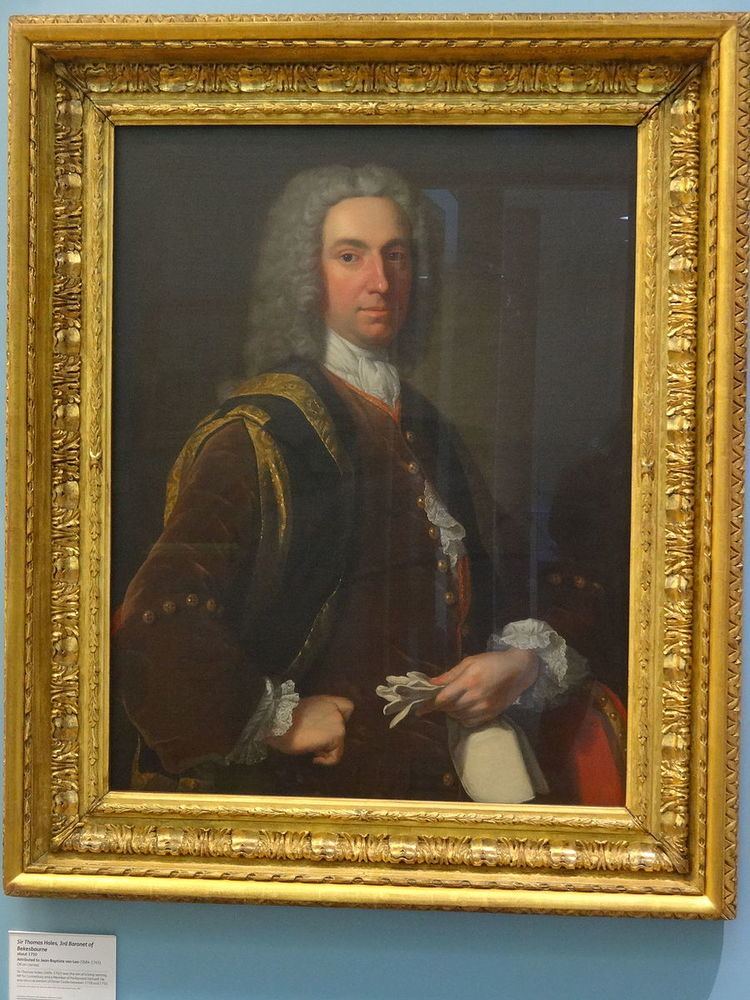Name Sir Hales, Role Member of Parliament | Died October 6, 1762 Deposed date October 6, 1762 | |
 | ||
Sir Thomas Hales, 3rd Baronet (c. 1695 – October 1762), of Beakesbourne in Kent, was an English courtier and Member of Parliament.
Hales was the eldest son of Sir Thomas Hales, 2nd Baronet, of Brymore, and was educated at Oriel College, Oxford and the Inner Temple. He succeeded his father as 3rd Baronet on 7 January 1748.
He entered Parliament in 1722 as Whig member for Minehead, being a member of the Duke of Dorset's faction and supporting the Walpole and Pelham governments. He subsequently also represented Camelford, Grampound, Hythe and East Grinstead, being an MP for most of the last forty years of his life.
The only break in his Parliamentary career came in 1741: at the notoriously corrupt rotten borough of Grampound, his opponents had contrived a disagreement over who was the rightful Mayor and therefore returning officer for the constituency. According to their Mayor, Hales and his pro-government colleague Thomas Trefusis were re-elected by 35 votes to 17; however, his opponents had arranged for the Sheriff to direct the writ for the election to their own nominee, so it was his version of the result (declaring Hales and Trefusis defeated by 27 to 23) which was returned to Parliament. Hales and Trefusis initially petitioned against this outcome, but withdrew their protest before a decision had been reached. Hales returned to the Commons at a by-election for Hythe three years later.
Hales held the lucrative post of Clerk of the Board of Green Cloth to the Prince of Wales from about 1719 until 1727, and to the King from his accession in 1727 until 1760. He was also Lieutenant of Dover Castle from 1728 to 1750 and Vice-Warden of the Cinque Ports from 1750 until his death. On the accession of George III in 1760 he lost his posts in the Royal Household, and successfully applied to Prime Minister Newcastle for a pension in recompense, although he was granted only £600 a year in place of the £800 he had asked for.
He died in 1762. He had married Mary Marsham (1698–1769), daughter of Sir Robert Marsham of the Mote, in 1723, and their children included:
